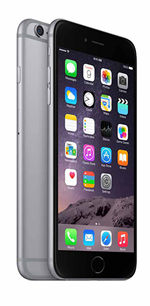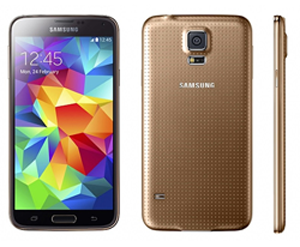Whether you are taking the plunge and buying a smartphone for the first time (if so, you can learn some of the lingo here) or looking to upgrade your old smartphone, finding the best mobile phone for you can feel like a daunting task. That's why we're going to take you on a guided tour of today's top smartphones, both iPhone and Android devices, along with the accessories and wireless plan you'll need to make the most of your new smartphone. And at the end you will be ready to make a confident decision regarding which one belongs in your pocket. There are dozens of smartphones across a wide variety of price points and all manner of features thrown at you: like how many megapixels the camera has, screen size, fingerprint readers, app stores, battery life—and that's just to name a few.The key to finding the best smartphone is deciding on a price point you are comfortable with and then deciding which features matter the most for you.
If there is a single device that defines the modern smartphone, it is the iPhone. With Apple in complete control of both the hardware and the software, there is a consistency to the experience with an iPhone that Android simply doesn’t match.

Pros
Cons
If your entire family or circle of friends are on iPhones it probably makes sense to join them. Apple's iMessage and Facetime apps are just a couple examples of apps that work best (or only) between iPhones. People that love trying out the latest app or game should go with iPhone, as it remains the platform of choice for many developers. Finally, if you already have other Apple hardware, like a Macbook Air, iPad or Apple TV, you are simply going to get more out of these devices when pairing them with an iPhone.
Since 2014, there have been two sizes of new iPhone, a standard 4.7-inch screen model and the Plus model with a 5.5-inch screen. If you use your smartphone a lot you are probably better off going with the Plus model, because it offers dramatically more battery life and the larger screen means it can almost take the place of a small tablet. The trade-off is a larger device that will take up more space in a purse, may not fit in your pocket and cannot be used one-handed by those with smaller hands. If you aren't obsessed with the latest tech and are looking to get a great deal on an iPhone, consider going with one of the older models; Apple typically keeps them on the market for a few years.
Developed by Google, Android is the most widely used operating system on the planet and can be found on devices ranging from $10 all the way up to almost $800. While high-end Android phones from Samsung or LG have cameras and screens that are as good—or better—than the iPhone, it is the ability of Android to also deliver an excellent experience to devices that cost less than $200 that has helped make it a worldwide phenomenon.

Pros
Cons
If you are looking to get a smartphone on a budget there is no question that Android is the way to go. For less than $200 there are plenty of excellent options. For heavy users of Google services, like Gmail, there is no better way to experience it on mobile than through Android. If openness is important to you, while apps that you buy on Android are locked to the platform (similar to iOS), Google is much more open with the rest of the content you buy on Google Play. And even if you switch away from Android in the future you'll be able to access any books, movies, music or TV shows that you buy through Google Play.
On the high-end, the two main manufacturers are Samsung and LG. Samsung's Galaxy S6 line (S6, edge or edge Plus) or Note 4 are all amazing smartphones with cameras and screens that best the iPhone. The LG G4 similarly trumps the iPhone on camera and screen specs and has a now-rare, removable back that lets you swap out the battery or just the back itself, to change the look of your device. Low- to mid-range devices are highly competitive in the Android world with manufacturers like Huawei, Motorola, BLU, ZTE and Kyocera all offering compelling options.